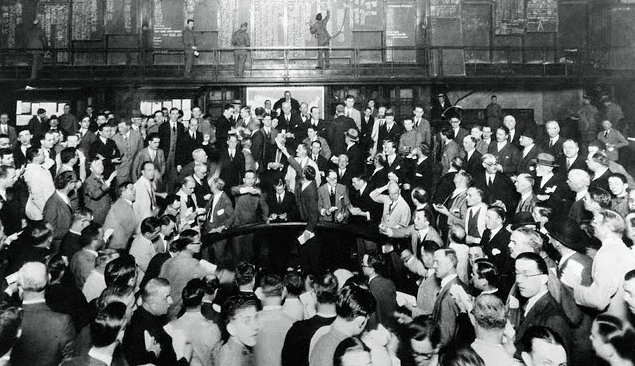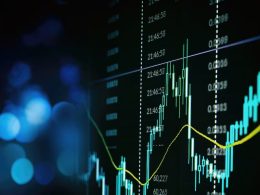by Guy Haselmann, Director, Capital Markets Strategy, Scotiabank GBM
· A market economy is one based on supply and demand with little or no government control. Dictionary site ‘Investopedia’ states that “a completely free market is an idealized form of a market economy where buyers and sellers are allowed to transact freely (i.e. buy/sell/trade) based on a mutual agreement on price without state intervention in the form of taxes, subsidies or regulation.” Toto, I don’t think we are in Kansas anymore.
· After the 2008 financial crisis, regulatory banking rules (i.e. macroprudential policies) conspired with zero (or negative) interest rates and asset purchases to exterminate the markets’ ability to freely calibrate clearing market prices based on supply and demand factors. It is impossible for central banks to sustain controlling influence on market sentiment, investor behavior, correlations, and valuations, simply because effectiveness wanes over time.
· As time passes, central bank stimulus stretches financial asset valuations in a manner that outpaces fundamental economic improvements, thus skewing future risk-reward distributions to the downside. Investors slowly begin to boycott over-priced securities, which in turn compromises market liquidity. Eventually the slow drip morphs into a cascade where central banks lose control of the process.
- The October flash crash in Treasuries might be an example.
- Zimbabwe was the greatest modern example of lost control when its money printing policy resulted in a worthless currency after achieving an estimated inflation rate of 79 billion percent (no, really).
- In January, the Swiss National Bank broke its currency-cap-promise resulting in its (G-10) currency moving over 40% in 10 minutes.
- The ECB began its overly-hyped asset purchase program after markets had re-priced trillions of debt securities into negative yields. Could the 14 point (44 bps) collapse this week in the price of German 30-year bonds be an indication of the collateral damage resulting from the ECB’s market involvement?
· Central bank policies have encouraged financial risk-taking, but central bankers offer (spurious) assurances that while pockets of froth exist, equity valuations (in particular) are ‘in-line with historical multiples’. This advice may prove just as fatuous as it did in 2006/2007, when Bernanke testified before congress that the housing sector was not in a bubble.
· At least FOMC members admit that they expect ‘bumpy’ markets when rate ‘lift-off’ occurs. They are fully aware that their policies have provided cheap financing for carry trades and speculation which is evident in near-record low yields and credit spreads, and record amounts of NYSE margin debt. By most measures, stocks, bonds, and various real estate regions are over-valued. Unfortunately, ‘fair’ value is a futile concept during non-free markets and aggressive interventionist policies.
· The historical movement of Portuguese yields is a worthy example of the sway of central bank policy. The Portuguese 10 year traded above 17.25% in 2012. This past March it traded 55 basis points below the US 10-year yield to a level of 1.56%. Portugal’s debt-to-GDP ratio was 83.7% in 2010, 111% in 2012, and has been greater than 125% since 2013. Clearly, the drop in yield has not been a function of improving debt levels or free market determinants. It has also not been due to debt restructuring or due to a balanced budget (its budget deficit is >3%). The significant improvement in yields was mainly a function of aggressive central bank action on the part of the ECB.
Fed’s Timing and Path
· In order for the FOMC to hike no later than the July meeting as I expect, they need to obtain some undefined amount of further evidence that weak Q1 GDP was indeed a transitory aberration; something each member believes. Since every FOMC member expects a decent bounce-back in Q2 (which they believe will accelerate into the second half of 2015), it is unlikely that they need a full quarter of strong growth under their belt before voting to hike. There have been some pockets of economic strength, including the May auto sales yesterday which tallied to an astounding 17.79 million rate.
· When looking through the smoke screen of ‘data dependency’ the fact is that the Fed is basically within a whisker of its dual mandates. At this point, waiting for some improved economic data has as much to do with its perception of maintaining its credibility as it does with receiving insurance that it is correct about Q1 being transitory.
· At a higher level, the Fed’s experiment with zero interest rates and asset purchases pre-supposes the correctness of many Keynesian assumptions; many of which make little sense. Investors are also asked to accept with a great leap of faith that the FOMC can provide some ideal mix of difficult-to-measure variables that achieves what it considers to be the ‘appropriate’ amount of inflation and economic growth. It doesn’t take much to see how arbitrary this all is.
· Does the Fed know for certain that its policy over the past few quarters hasn’t actually been counter-productive? Does the Fed truly have any sense how markets will react when it finally raises rates for the first time in nine years? If monetary policy works on an 18 to 24 month lag, and the Fed is confident that Q1 was an aberration and inflation will ‘move toward 2% in the medium term’, then shouldn’t the Fed just hike rates at its June 17th or July 29th meeting? Isn’t it possible that the uncertainty hanging over markets about the timing for lift-off has become more harmful than beneficial?
· Only if the economy is powered by the marginal borrower who will no longer borrow after a 0.25% hike, does it make sense to believe a hike will derail the economy. Comparisons to 1937, where a hike pushed the US into recession, are incomparable and groundless.
· On the other hand, maybe the FOMC is worried that the ‘no free lunch’ concept makes them suspicious of the possibility of a meaningfully deleterious market reaction which could have a negative impact on the broader economy. However, under this logic, delaying a hike would only exacerbate such a response.
· If the Fed were to hike, say, in July, then it could spend a few months allowing markets to settle down before hiking a second time prior to the end of the year. When choosing to further remove accommodation in 2016, the Fed will likely prefer shrinking the balance sheet rather than hiking IOER. This hiking-path scenario would allow the Fed to be as gradual as they have promised; maximizing the time between actions, which could help prevent undue stress on markets inflated by years of moral hazard ‘puts’ and massive central bank liquidity.
· On April 30th, I urged caution on Treasuries and advised holding powder to purchase in front of 2.40% 10 year yields. I recommend making opportunistic purchases in the backend today, as well as re-establishing flatteners. I also advise re-entering volatility and US dollar longs. A good argument could be made for these exposures regardless of the outcome of Friday’s employment data. In March, I recommended the position ‘long US Treasuries vs. short EU periphery’. This position should be maintained.
“A great deal of intelligence can be invested in ignorance when the need for illusion is deep” – Saul Bellow
Read/Download the complete report below:
Global Macro Commentary June 3
Regards,
Guy
Guy Haselmann | Capital Markets Strategy
▬▬▬▬▬▬▬▬▬▬▬▬▬▬▬▬▬▬▬▬▬▬▬▬▬▬▬
Scotiabank | Global Banking and Markets
250 Vesey Street | New York, NY 10281
T-212.225.6686 | C-917-325-5816
guy.haselmann[at]scotiabank.com
Scotiabank is a business name used by The Bank of Nova Scotia














